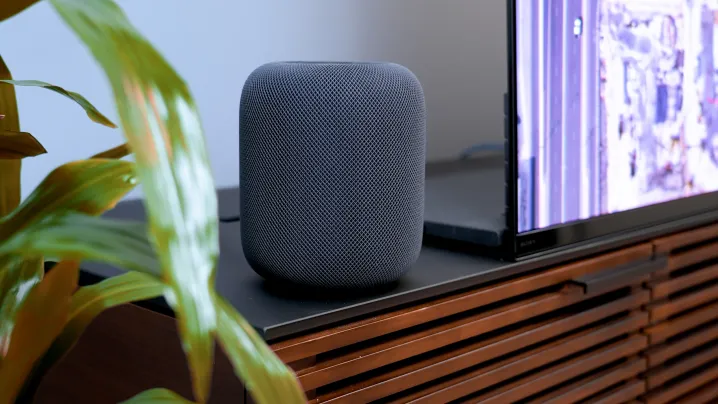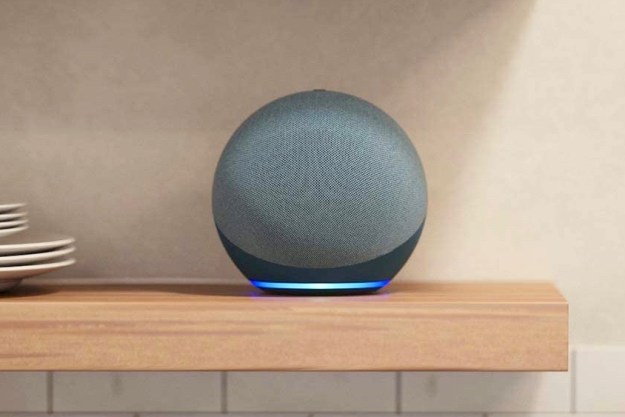The refreshed Apple HomePod is one of the best smart speakers on the market. It offers booming sound, a great design, and access to the Siri voice assistant. It also costs quite a bit of cash — making it one of the most expensive smart speakers. On the other side of the pricing spectrum is the Echo Pop, which is remarkably cheap and gives you access to the Alexa voice assistant.
But is the HomePod (Gen 2) worth the added cost? Or are you better off opting for the affordable Echo Pop? Here’s a closer look at the two smart speakers to help you figure out which is best for your needs.
Pricing and design

The Echo Pop clocks in at just $40 and is regularly on sale for much less. It’s small in stature (at just 3.6 inches tall) and features a circular shape with a flat, front-facing speaker. On the top of the unit, you’ll find an LED indicator bar and a few buttons to control the speaker. Four colors are available (charcoal, lavender bloom, glacier white, and midnight teal), giving you an easy way to find something that matches your home décor.
The HomePod (Gen 2) costs much more at $299. It’s nearly twice the size of the Echo Pop (standing 6.6 inches tall), boasting a cylindrical design with a touchscreen on the top of the unit. This touchscreen also glows a variety of colors to let you know the status of the speaker. Its materials are much more premium than the Echo Pop, and it’s obvious that the HomePod is designed as a luxury product.
Sound quality

Apple packed the HomePod (Gen 2) with high-end audio gear. This includes a four-inch excursion woofer, an array of five horn-loaded tweeters, and support for Spatial Audio with Dolby Atmos. A big selling point is its 360-degree sound production, which allows it to push noise to all corners of your home. In other words, it sounds incredible and gets loud enough to fill a large room. You can also use AirPlay to quickly share content from your iPhone or other Apple devices.
The Echo Pop doesn’t sound nearly as great, though it sounds better than its price tag would suggest. It uses a 1.95-inch front-firing speaker, which does a decent job at low levels — but becomes muddied at higher volumes. Instead of using it to fill a whole room with sound, it’s best used for background music while in the kitchen or home office.
Features and smart home connectivity

Both the Echo Pop and HomePod (Gen 2) can sync with other smart home devices. Echo Pop is designed for Alexa-enabled products, while HomePod works with Apple HomeKit. Amazon’s catalog of compatible products is much larger than Apple’s, though there are still plenty of great items to choose from (including smart thermostats, smart locks, and smart lights).
Be sure to consider this before making a purchase, especially if you want your smart speaker to serve as the central hub of your smart home. There’s nothing worse than snagging a HomePod, only to realize it doesn’t work with your existing devices.
Is the HomePod worth it?

If you want a smart speaker that sounds great and is easy to use, the Apple HomePod (Gen 2) is without a doubt worth the price tag. Its hardware allows it to churn out incredible audio that can fill your entire home. You’ll want to make sure it’ll play nice with the rest of your smart home — but with Apple dedicated to the implementation of Matter, that shouldn’t be much of an issue.
However, if you only plan to use your smart speaker in a small room, you can save a bundle of cash by picking up the Echo Pop. It’s not nearly as powerful as the HomePod, but it’ll work perfectly fine as a way to listen to background music as you work, cook, or relax.
Editors' Recommendations
- The best Apple HomeKit devices for 2023
- Sonos One vs. HomePod mini: which smart speaker is best?
- Apple HomePod vs. Apple HomePod 2023
- Apple reportedly working on a new iPad-like smart home display
- HomePod Mini vs. Echo Dot: which is better?




